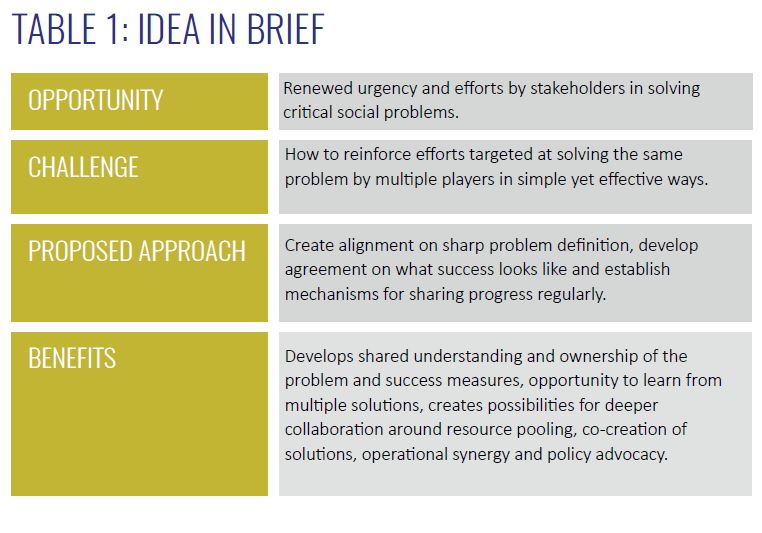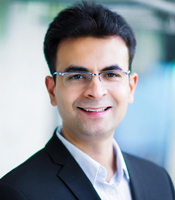Every problem has multiple perspectives. In the social sector especially, we deal with complex, inter-connected problems that often have more than one solution or approach. The dilemma we sometimes face is that each of these approaches or perspectives can overlap with each other, and we find ourselves duplicating work. They can also be mistaken as being the problem itself, when in fact, each could be just one aspect of the overall problem.
In the social sector, we tend to focus on just one aspect and fail to look at the larger picture. Most of the time we do not identify or define the real problem. This could be because of the urgency to find solutions, but often this hurry muddies the real problem and in doing so, limits the impact.
If only we could pause to analyse and define the problem more sharply.
Collective Problem Inquiry
The magnitude and complexity of problems in our country are continuing to grow, almost exponentially. To resolve these problems, we need to work better and perhaps some of us need to re-look at our approach to finding solutions. We at Dr Reddy’s Foundation have come across passionate, committed and visionary people who have brought about change and impact at scale, in part because they defined the problem sharply before searching for solutions.
Collective Problem Inquiry can help us leverage the collective intelligence around us to converge on the core of the problem.
Collective Problem Inquiry, or CPI, is an approach that aids with just that: it evolves from the ground up and attempts to bring synergy behind co-defined and sharply articulated problems. It enhances insights generated by others and builds on their latent knowledge. CPI can help us leverage the collective intelligence around us to converge on the core of the problem, and we can benefit jointly as well as individually.

The Collective Problem Inquiry model | Source: Dr Reddy’s Foundation
How it works
CPI entails creating alignment on a sharp problem definition, agreeing on what success looks like and establishing mechanisms for sharing progress, regularly. This results in a shared understanding and ownership of the problem and success measures, and provides an opportunity to learn from multiple solutions.
After working on individual initiatives at Dr Reddy’s, we realised that on many issues we needed to collaborate with others. The faster we started defining and aligning around a problem collectively, the faster we could achieve meaningful breakthroughs. The process of CPI entails debate, trust, collective memory and wisdom, and the exchange of ideas. It also requires us to be flexible in our approach and have a mindset that is open to collaboration, learning and sharing. The underlying principle is that we use our collective wisdom to correctly define the problem, its solutions and how we might go about operationalising them and measuring progress.
Step 1: Define the problem sharply
The challenge that we must first overcome is a bias towards action, especially when it comes to solutions. We tend to create perceptions of the problem based on memory or experience which makes it difficult for us to redefine it later. For instance, the problem of changing health-related behaviour is often perceived as a lack of awareness about the benefits of the desired behaviour. In fact, the real problem is the amount of initial time, effort, and resources that are required to adopt the new behaviour. If we take the example of new-born and infant care and breastfeeding practices, improving the quantity and quality of complementary feeding practices among infants can help address the problem.
Step 2: Create alignment on straight problem definition
It is critical to finding impactful solutions. Without alignment at the problem definition stage, we are likely to miss opportunities, use resources sub-optimally, and pursue initiatives that are not aligned with national priorities within a sector. It is also important to be open-minded about redefining the problem as well, even if it diverges from our initial understanding and articulation.
MITRA, a DRF initiative, reached out to organisations working on similar issues to vet their definition of the problem. MITRA works to enable small & marginal farmers get better economic returns by improving access to agri-extension services that can help reduce the cost of cultivation and improve yields. Currently, the programme is being implemented with 100,000 farmers across seven states.
It is important to be open-minded about redefining the problem.
S Suman, Team Lead at MITRA says: “After we defined the problem, we reached out to many organisations working on similar issues. There was an agreement and alignment on the problem with many stakeholders and also on the measures of success. However, as other organisations are pursuing different solutions to solve the problem, we decided on sharing our progress and results regularly. Our solution is to develop a community volunteering model with a distinct approach to lead farmer selection.”
“The idea needs proof of concept on the ground and currently we are partnering with technical agencies, research institutions and private players in the agri sector ecosystem, to test our model and measure impact. We plan to keep sharing the results from our work with the ecosystem.”

Why must we walk alone when we can co-define a problem and align for bigger impact?
Step 3: Agree on what success looks like
Most of the time the efforts are not impactful, partly because we have not defined what success looks like, or, we have defined success but are not aligned on that definition. We must fight the urge to opt for quick solutions, which often do not wholly address the core problem at hand.
Ernakulam district in Kerala state is a good example of agreeing on measurable outcomes and working together to achieve them. In 1988, the state’s objective was to achieve 100 percent literacy. There were many steps, many routes and many stakeholders involved in the solution. The accepted measure of success was ensuring that all illiterate people would be able to read in Malayalam at 30 words a minute, copy text at seven words a minute, count from 1-100, and add and deduct three-digit numbers.
On World Literacy Day, February 4, 1990, Ernakulam district was acknowledged as India’s first totally literate district. Various initiatives including political will and aggressive community-based initiatives may have helped. The difference was perhaps in defining what the measure of success should be.
Step 4: Establishing mechanisms for sharing and learning
This enables us to continuously learn and to refine the solutions. The exchange of divergent approaches and ideas also helps build trust, collective memory and wisdom. Crucially, at this stage, we must avoid our agenda getting skewed by the resources available. The goal is to define and ideate first, and then figure out operationalising.
Where does one begin?
- Develop ownership and buy in of the leadership team on the approach
- Choose a programme or project that is in design phase or an early phase, or choose a project with an opportunity for course correction, if needed
- Communicate the plan to integrate CPI with internal and external stakeholders
- Share learnings within the organisation on integrating CPI in the project or programme
- Based on results, prepare a roadmap for integrating CPI at an organisational level
With CPI could come issues of having to slow down, let go of control, unlearn, and even shift the goal post. Yet, we can make it work with greater impact if we ‘own’ the problem collectively, define it sharply, and agree on the common metrics for measurement and continuously share progress.
Why must we walk alone when we can co-define problems and align for bigger impact?




